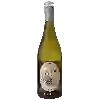
Winery Paul MasChâteau Paul Mas Languedoc Rosé
In the mouth this pink wine is a with a nice freshness.
This wine generally goes well with vegetarian, appetizers and snacks or lean fish.
Taste structure of the Château Paul Mas Languedoc Rosé from the Winery Paul Mas
Light | Bold | |
Dry | Sweet | |
Soft | Acidic |
In the mouth the Château Paul Mas Languedoc Rosé of Winery Paul Mas in the region of Languedoc-Roussillon is a with a nice freshness.
Food and wine pairings with Château Paul Mas Languedoc Rosé
Pairings that work perfectly with Château Paul Mas Languedoc Rosé
Original food and wine pairings with Château Paul Mas Languedoc Rosé
The Château Paul Mas Languedoc Rosé of Winery Paul Mas matches generally quite well with dishes of pasta, vegetarian or appetizers and snacks such as recipes of pasta with mushroom sauce, quiche without pastry or basil and cherry tomato clafoutis.
Details and technical informations about Winery Paul Mas's Château Paul Mas Languedoc Rosé.
Discover the grape variety: Molette
Molette blanc is a grape variety that originated in France (Savoie). It produces a variety of grape specially used for wine making. It is rare to find this grape to eat on our tables. This variety of grape is characterized by medium-sized bunches and small grapes. The Molette blanc can be found cultivated in these vineyards: South-West, Cognac, Bordeaux, Savoie & Bugey, Provence & Corsica, Rhone Valley.
Last vintages of this wine
The best vintages of Château Paul Mas Languedoc Rosé from Winery Paul Mas are 0
Informations about the Winery Paul Mas
The Winery Paul Mas is one of of the world's great estates. It offers 133 wines for sale in the of Languedoc to come and discover on site or to buy online.
The wine region of Languedoc
Languedoc (formerly Coteaux du Languedoc) is a key appellation used in the Languedoc-Roussillon wine region of southern France. It covers Dry table wines of all three colors (red, white and rosé) from the entire region, but leaves Sweet and Sparkling wines to other more specialized appellations. About 75% of all Languedoc wines are red, with the remaining 25% split roughly down the middle between whites and rosés. The appellation covers most of the Languedoc region and almost a third of all the vineyards in France.
The wine region of Languedoc-Roussillon
Languedoc (formerly Coteaux du Languedoc) is a key appellation used in the Languedoc-Roussillon wine region of southern France. It covers Dry table wines of all three colors (red, white and rosé) from the entire region, but leaves Sweet and Sparkling wines to other more specialized appellations. About 75% of all Languedoc wines are red, with the remaining 25% split roughly down the middle between whites and rosés. The appellation covers most of the Languedoc region and almost a third of all the vineyards in France.
The word of the wine: Sommelier
Person working in a restaurant and responsible for the wine service. The head sommelier is responsible for putting together the wine list, managing the sommelier brigade, and ensuring the sale of wines according to the dishes (food and wine pairing).














